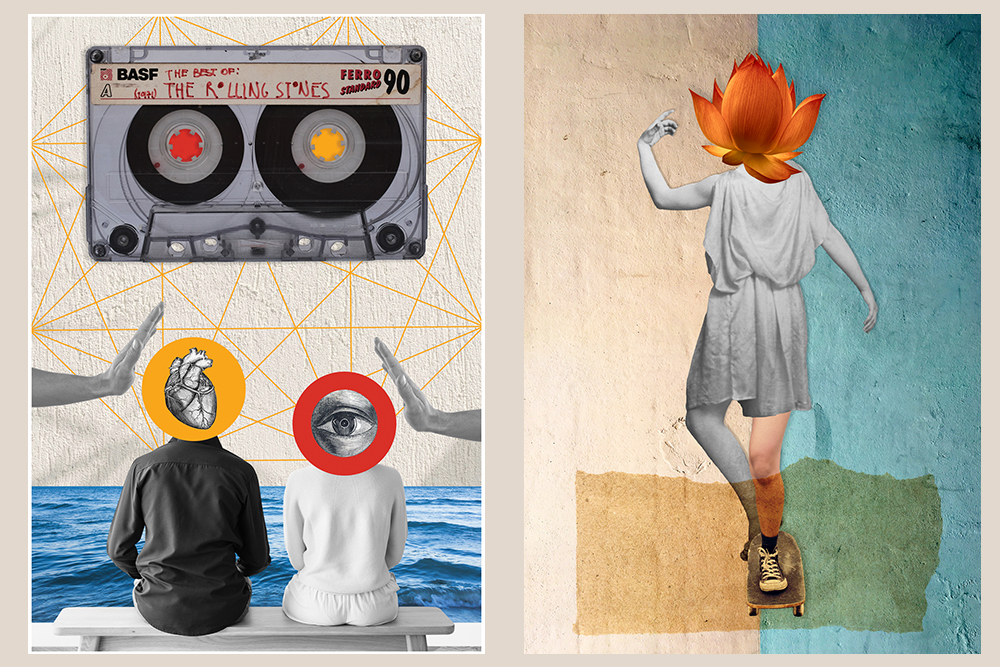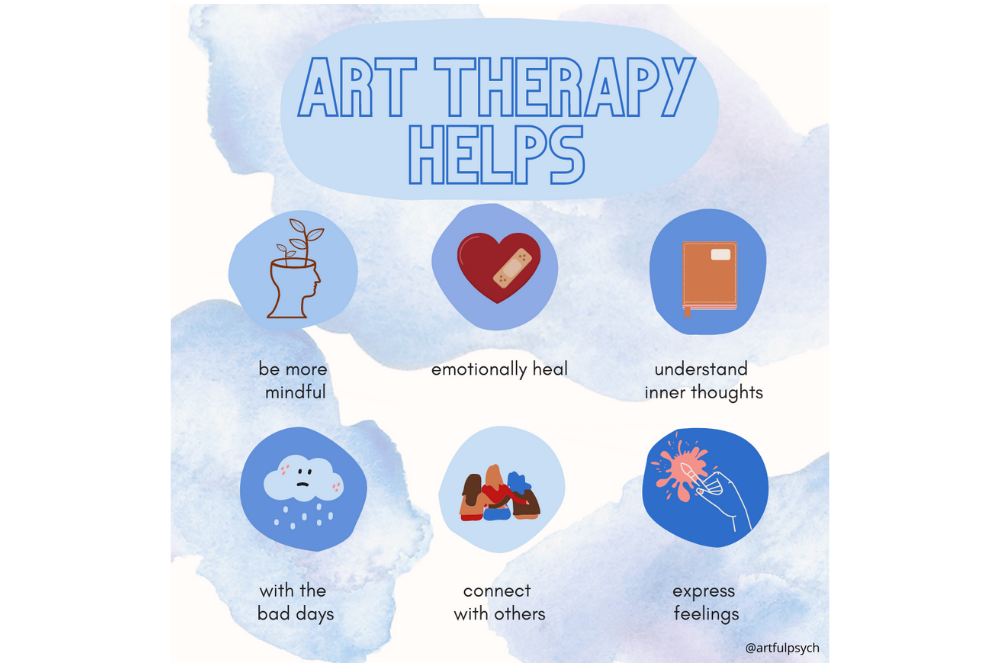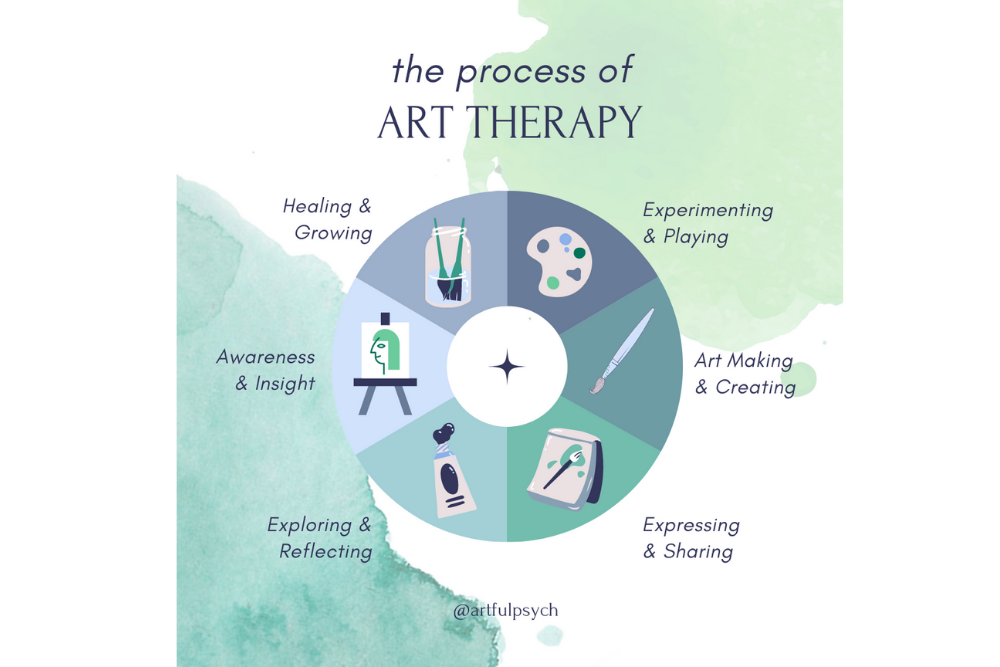For centuries art has been used as a vessel for expressing our customs and traditions, and as a reflection of our times, but most importantly, art has been used as a tool to reflect and explore our own feelings and emotions. Creative people already experience its soothing benefits: art provides a respite that quiets the mind, and creating something can bring a sense of calm and provide an escape. By creating that space for awareness and introspection, art can also be used when words fail.
A way to express what words can’t say
“I’ve never doubted the healing power of art,” says graphic designer Lorena Campillo. “But it wasn’t until I dealt with the aftermath of a long-term abusive relationship, and the trauma and PTSD that came from it, that I experienced the creative process as a way to express what I could not say in words – not even to myself. The pain, darkness, brokenness, shame came to the surface as digital collage art. I could name the feelings once I put them in graphic form and confront them. I have been able to share my process, connect, and recover my voice, both creatively and metaphorically. Looking at the collages I can see exactly what I was going through at that moment, and how far along I had come. I am healing, and creating collages is a big part of the process.”

When used correctly withing a therapy setting and with the guidance of a therapist, art can also be used as a healing tool.
What is art therapy?
Art therapy, which is not to be confused with art as therapy, is a client-led therapy style that focuses on the process rather than on an art technique, to achieve a deeper exploration.
Evidence of the effectiveness of art in processing trauma is growing as advances in brain research increase our understanding of where and how we store experiences. Studies suggest that some traumatic memories are stored nonverbally and may be retrieved through recollections of sensory and visual elements. When done with a trained professional, art therapy has healing potential: it can safely access these recollections by engaging the senses. It’s a safe place for self-discovery and a tool to help cope with traumatic stress.
California-based psychotherapist Christine Nazarian kindly shared with us two of her infographics that explain the process of art therapy and how it helps to heal.

“Art therapy helps in so many ways,” says Christine. “Here are just a few: Art therapy supports your mental health in so many forms inside and outside of the therapy room. It provides positive coping tools like mindfulness, support with our relationships, growing insight and awareness, and in the moment self-soothing and expression!”
While creating art is something that can be done spontaneously and at our own leisure, for art therapy it is important to find a registered professional with the education and knowledge to welcome us into a safe space where our vulnerability can be properly supported. “It’s much more than just ‘making art’ during therapy,” explains Christine. “The experience of creating with a therapeutic setting connects the art to layers of yourself. Art therapists have the training, knowledge, and insight to guide you in the process to explore much more than what’s on the page. Every aspect of the process is considered – from the art materials used, images created, thoughtful reflections, and links to your better well-being and mental health.”

We hope that however you choose to engage in a creative process to promote emotional expression, it helps you cope with whatever you are experiencing at the moment. To learn more about art therapy and Christine Nazarian’s practice, please visit her website or find her on Instagram as @artfulpsych. To see more of Lorena Campillo’s collage work, please visit her website or find her on Instagram as @eledesign_mx.
Mental health affects us all. If you or someone you know needs help, you are not alone.
Call 1-800-273-8255 for the National Suicide Prevention Lifeline in the United States or 1-833-456-4566 for Crisis Services Canada.
Outside of North America, please visit the International Association for Suicide Prevention for a database of resources: www.iasp.info.





